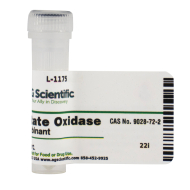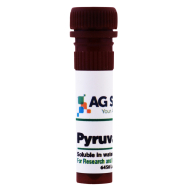As the Earth’s population grows at an unprecedented rate, it is vital to ensure we invest in improving access and removing barriers to clean water, and that includes increasing the use of electrochemistry for water remediation.

Scientists have determined that in line with our current population growth, access to freshwater will be severely diminished by 2030. In fact, it is approximated that there will be a 40% gap between water needed and clean water available to humans.
Even now at this time, only 9 countries have access to half the world’s clean water supply, which means an unequal distribution gap between areas will seemingly continue to widen as years go on. While the world is already experiencing water scarcity--to the tune of almost 2 billion people having limited or no access to clean drinking water--research says that this number will dramatically increase if we continue to consume resources and grow our population at our current rates. Simply put, there will be too many mouths even if the planet were to continue producing freshwater at its current rate.
On the other hand, one of the large contributors to the loss of freshwater is climate change. Arguments still rage on over the fact of humans being the main negative impact on the climate, yet the measurements of water loss and rising sea levels due to global warming and human interference is undeniable.
In addition to our planet’s rapidly changing climate and the booming population numbers, influencing countries currently do not invest enough money in clean water harvesting and distribution techniques to meet our sustainability goals, according to the UN.
So this begs the question: what clean methods can we employ to ensure we are attempting to meet the clean water needs of our expanding population?
Water Remediation Electrochemistry
Costly conventional water treatment processes are often rendered ineffective by stubborn contaminants while creating pollution in the process. This is where the use of electrochemistry comes into play. Electrochemistry is essentially creating an electrical current which sets off interrelated changes in a substance; typically a liquid substance (ie: water). Unlike other processes, electrochemical water treatment is a clean alternative that is cost effective and energy efficient.Electrochemical Water Remediation Techniques
There are two types of electrochemical techniques in relation to cleaning water: physical and chemical. Physical techniques, like electrodialysis, remove pollutants using certain exchange membranes that alternatively create dilution and concentration cells which the water moves through in order to purify it. To summarize, physical water-cleaning techniques are adopted through agents such as electrodes, which separate harmful particles in varying ways. Chemical techniques on the other hand can be thought of as directly altering the chemicals in a substance like water at the electrode site, or indirectly via a reaction with a reagent. Electrochemical water remediation is being praised as not only being able to safely strip contaminants but also for the ability to harvest and recycle useful molecules in the process.Ionophores and Detection of Specific Ions
There are electrochemical methods for detecting harmful chemicals, such as metal concentrations, in water using liquid-contact methods. Ionophores are a main component in detecting metal ions as part of an ion-specific electrode. Ionophores are essentially transport devices which attract specific ions depending on which type is being used by the researcher. Ionophores are able to transfer these ions through cell membranes. There are many uses for ionophores in the realm of clean water production. For instance some ionophores, such as macrolides, are antibiotics and can be used as such in order to clean water for use in agriculture and livestock. In order to further explain the electrochemical process using ionophores and ion-specific electrodes to detect contaminants, let’s use lead as an example; one of the most commonly discussed metals in relation to water contamination.Lead in Drinking Water and Why Electrochemical Detection Methods Are Best
As we are reminded even today by ongoing crises (e.g. Flint, Michigan), lead poisoning from high levels of lead in drinking water can be dangerous if not fatal unless properly monitored and remedied.
Traditional methods for detecting lead concentrations require extremely costly, bulky, and sophisticated devices. Therefore, there has been a push to utilize electrochemistry in creating easy to use, cost-effective, and space-saving devices such as ion-selective electrodes.


